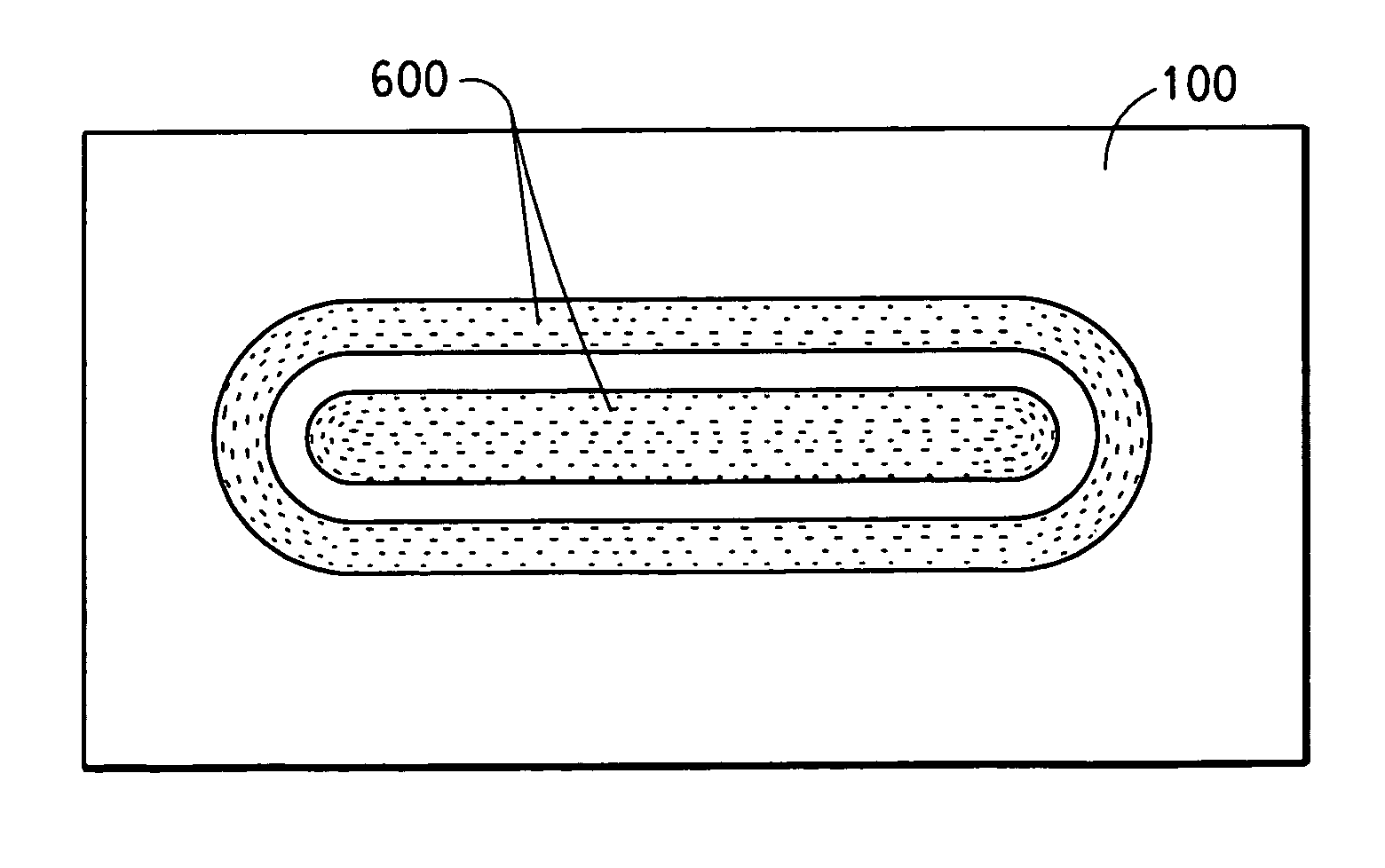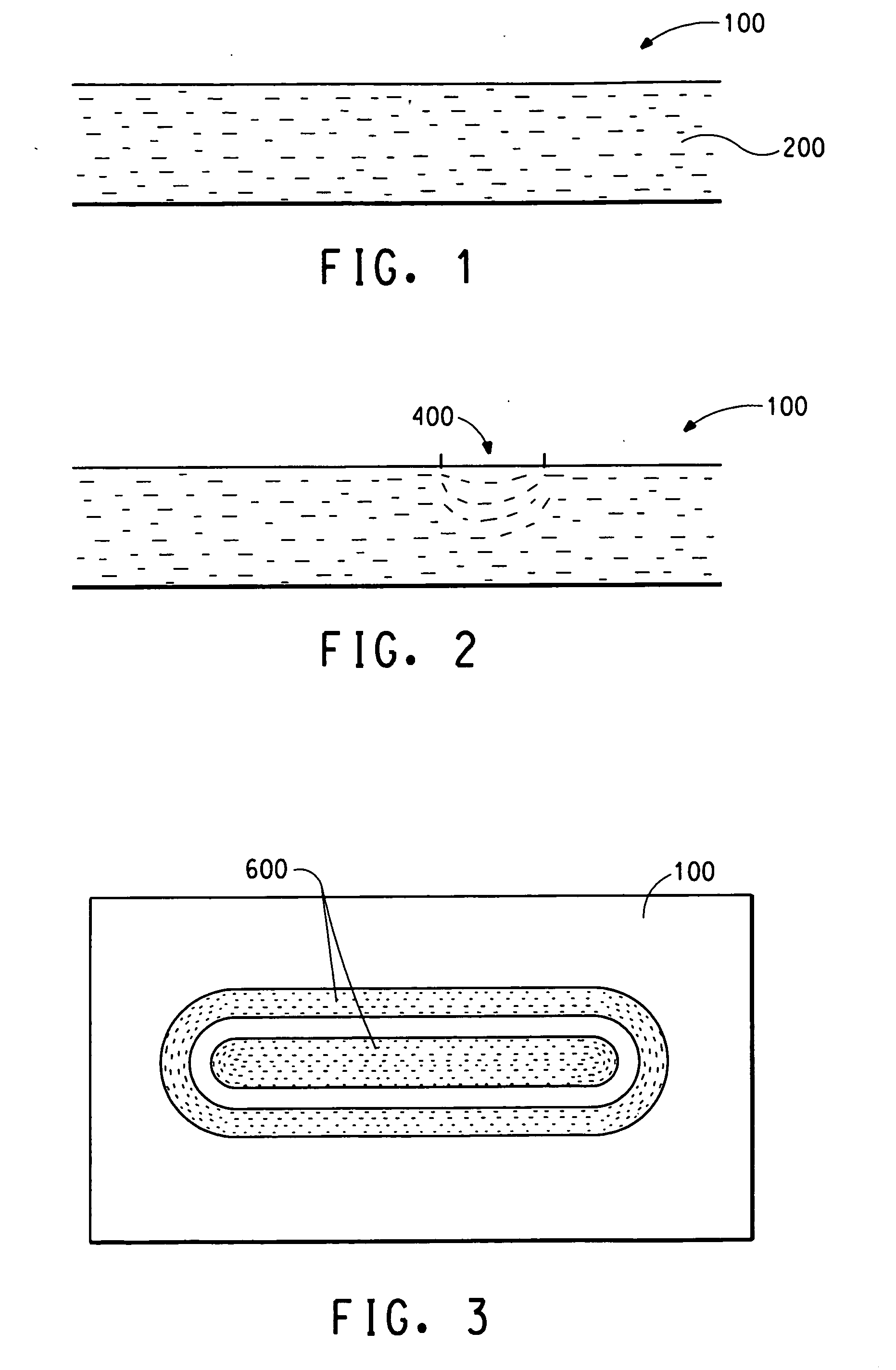Novel surface aesthetics employing magnetic particles
a magnetic particle and surface technology, applied in the direction of magnetic film to substrate application, inorganic material magnetism, magnetic bodies, etc., can solve the problems of not producing certain categories of decorative patterns, certain decorative patterns and/or decorative patterns that have not been incorporated into solid surface materials before, and achieving the effect of reducing the number of decorative patterns
- Summary
- Abstract
- Description
- Claims
- Application Information
AI Technical Summary
Problems solved by technology
Method used
Image
Examples
example 1
[0030] The following ingredients were weighed out and mixed:
620gmAlumina Trihydrate (ATM)318.13gmSirup (24% PMMA in MMA)39.58gmMMA Monomer3.03gmTrimethylol propane trimethacrylate (TRIM)8.49gmPMA 25 paste (t-butylperoxy maleic acid)1.56gmDioctyl sodium sulfosuccinate0.68gm85% phosphated hydroxyethylmethacrylate inbutyl methacrylate9.96gmstainless steel flake with magneticcharacteristics
at a temperature of 28 degrees C. After mixing for 1 minute, 0.91 grams of distilled water was added to the mixture. The mixture was then evacuated under vacuum (24-25 in Hg) using a pump and a suitable condensing vapor trap. After mixing and evacuating for approximately 3 minutes, 2.58 grams of calcium hydroxide slurry (34% in syrup) and 1.33 grams of ethylene glycol dimercaptoacetate were added using syringes. After 45 seconds of additional mixing and evacuation, the mixture was poured into a container of square design to form a layer of approximately 0.5-inch thickness. The container had a 0.040...
example 2
[0033] The metal-bottomed container described in Example 1 was demagnetized and subsequently magnetized by using the electromagnet system and motion-traverse sequence described in Example 1. A casting mixture was weighed out, mixed, and evacuated in the same manner and sequence as done in Example 1. The mixture was poured into this magnetized container approximately 20 seconds after mixing was stopped, analogous to Example 1. Insulation was placed on top of the casting and underneath the casting container and the casting was allowed to cure.
[0034] The magnetic field imparted to the container was sufficient to produce the same linear particle reorientation pattern in the casting as described in Example 1.
PUM
| Property | Measurement | Unit |
|---|---|---|
| aspect ratio | aaaaa | aaaaa |
| aspect ratio | aaaaa | aaaaa |
| particle size | aaaaa | aaaaa |
Abstract
Description
Claims
Application Information
 Login to View More
Login to View More - R&D
- Intellectual Property
- Life Sciences
- Materials
- Tech Scout
- Unparalleled Data Quality
- Higher Quality Content
- 60% Fewer Hallucinations
Browse by: Latest US Patents, China's latest patents, Technical Efficacy Thesaurus, Application Domain, Technology Topic, Popular Technical Reports.
© 2025 PatSnap. All rights reserved.Legal|Privacy policy|Modern Slavery Act Transparency Statement|Sitemap|About US| Contact US: help@patsnap.com


